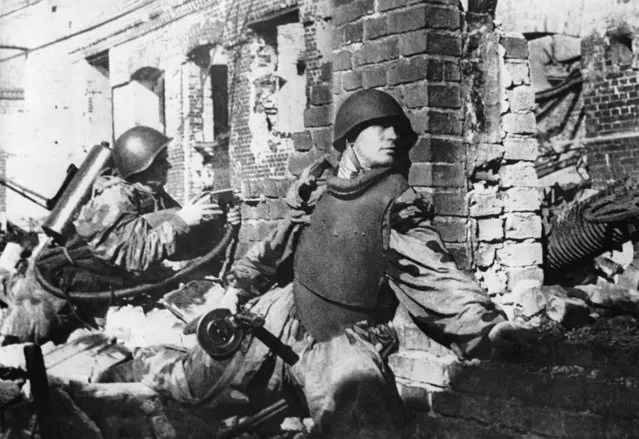
Stalingrad. Street combats, October 1942. Reproduction. (Photo by TASS)
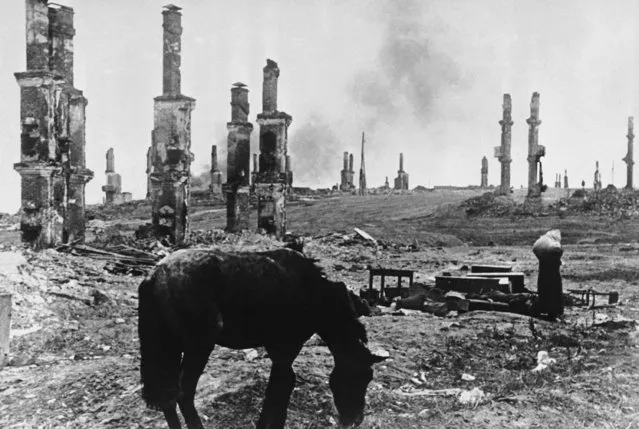
An abandoned horse grazes among the ruins of the Russian city of Stalingrad on December 18, 1942, about four months into the battle for the city on the Volga River between Axis forces and the Soviet army. In the background, at right, Russian women leaving their battered homesteads make their way through the ruins. (Photo by Alvin Steinkopf/AP Photo)
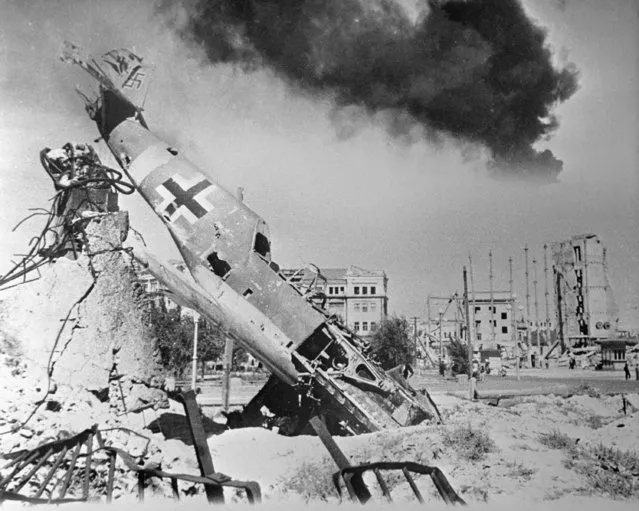
A downed German fighter lies amid the ruins of Stalingrad, 1942. Huge air battles were waged over the city during the course of the siege. (Photo by TASS)
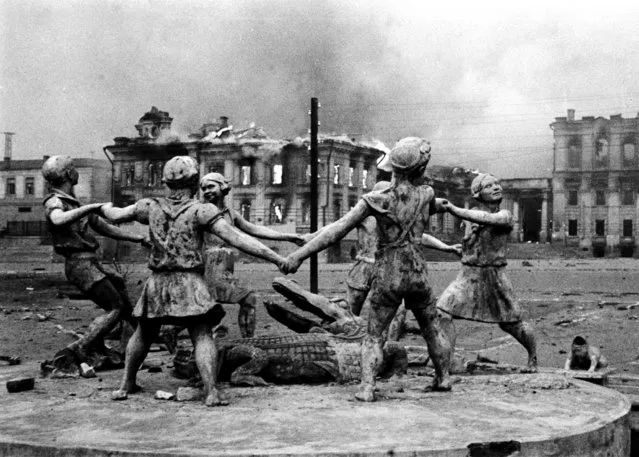
Stalingrad's main railway station in late 1942. (Photo by TASS)
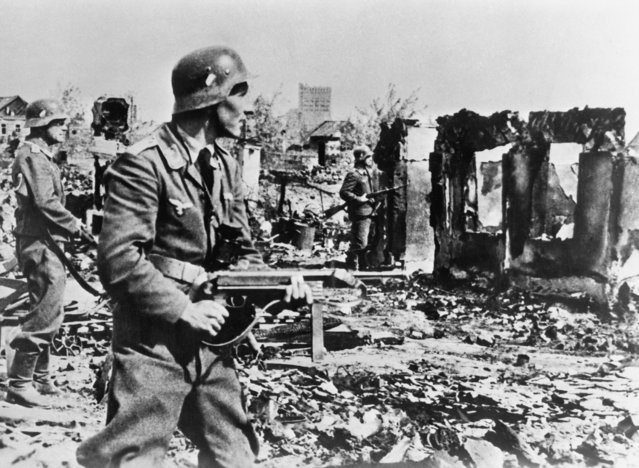
German troops in Stalingrad, USSR. September 10, 1942. (Photo by TASS)
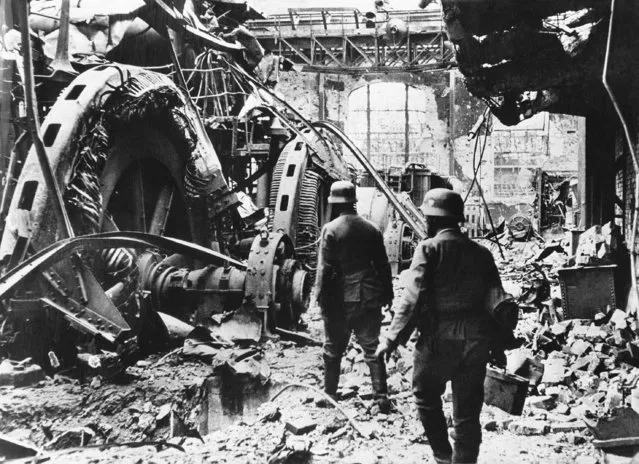
German troops passing through a wrecked generating station in the factory district of Stalingrad on December 28, 1942, where such fierce fighting has been raging for the past few months. The new Russian offensive has relieved the pressure, and surrounded a large number of German troops. (Photo by AP Photo)
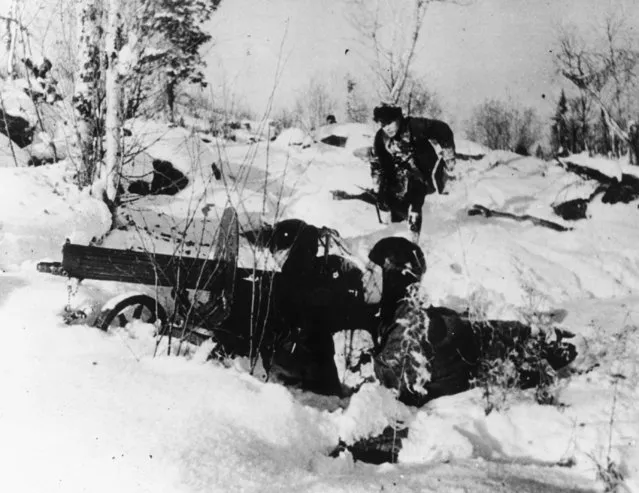
Machine gunners of the Soviet Red Army lie in deep snow, ready to fire their guns, on February 10, 1942, somewhere along the German-Russian front lines during World War II. (Photo by AP Photo)
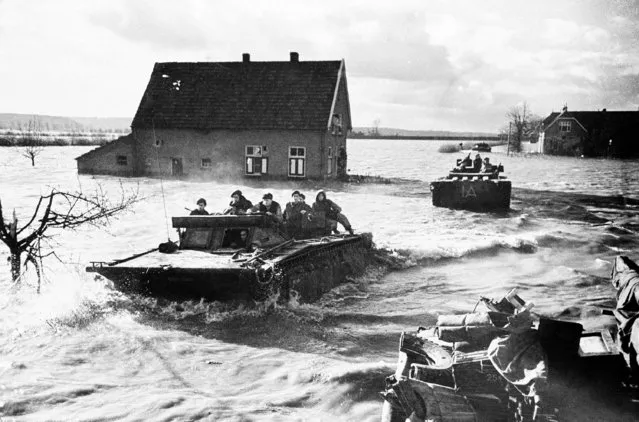
Loaded with Canadian Soldiers, Amphibious Vehicles of the Canadian first Army move across the inundated countryside of a village east of Nijmegen, February 21, 1945 in Netherland, after rescuing soldiers marooned by floods caused when Germans Dynaminated Dyke. (Photo by AP Photo)
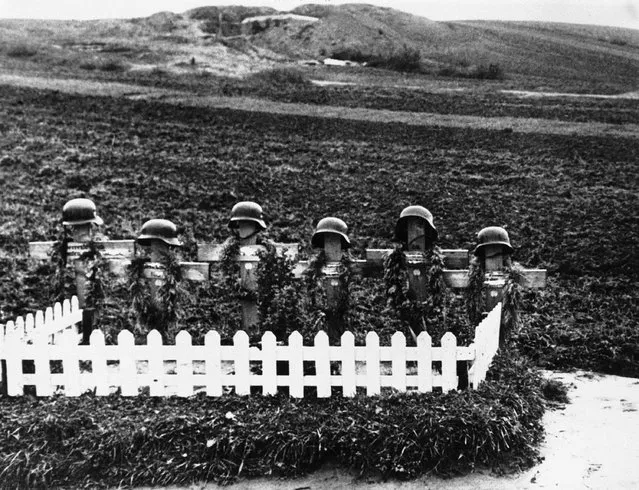
A roadside grave of some German soldiers, killed as a result of their Fuehrer's onslaught on the soviet people, somewhere in Russia on Feb. 28, 1942. (Photo by AP Photo)
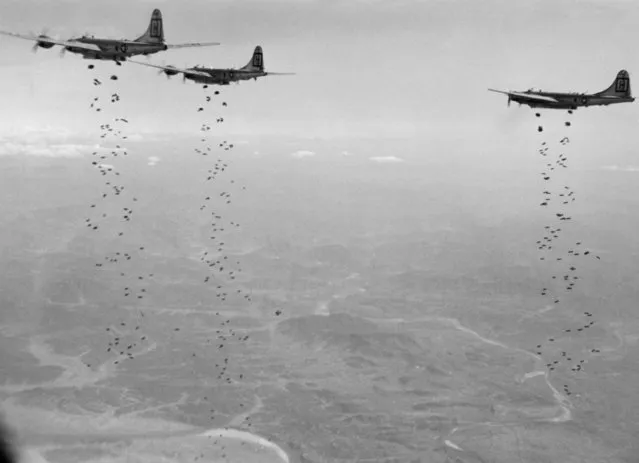
Bomber Command planes of the U.S. Far East Air Forces rain tons of high demolition bombs on a strategic military target of the Chinese Communists in North Korea on January 18, 1951. As part of the stepped-up aerial offensive against the enemy, attacks such as this one are staggering the Chinese, thus helping UN ground forces to stem the Communist push down the center of the Korean peninsula. The planes above blasting the Chinese hordes are B-29 Superfortress medium bombers. (Photo by AP Photo)
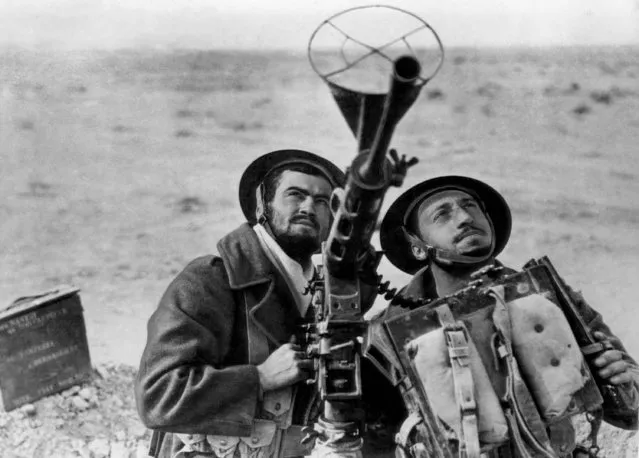
Two soldiers of the “Free French” armies man a captured Italian anti-aircraft gun in the siege of Bardia, eastern Libya on January 26, 1941. The British credited the “Free French” with important aid in the Libyan campaign. (Photo by AP Photo)
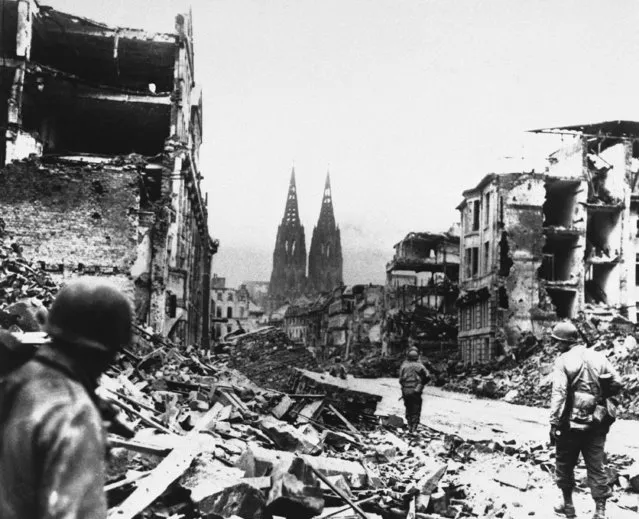
Scene from “The True Glory”, General Dwight D. Eisenhower's film report of the conquest of Europe, distributed in this country by Columbia Pictures for the Office of the War Information through the War Activities committee. Troops of the 3rd Armored Division, U.S. First Army, advance through the ruins of Cologne, Germany. The twin spires of the famous cathedral, only five blocks sway, are undamaged, March 8, 1945. (Photo by AP Photo)
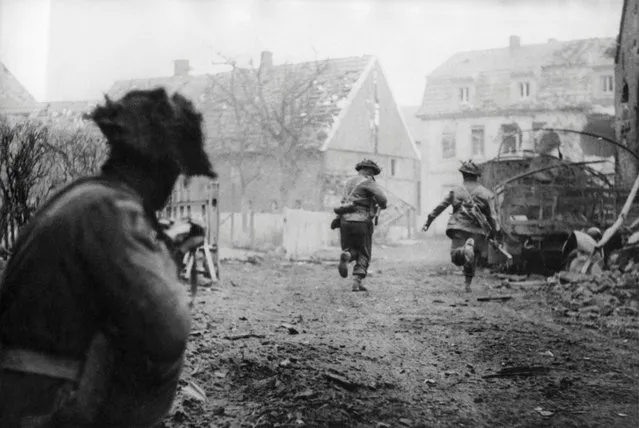
Picture released on April 12, 1945 of British soldiers of the 2nd Armored Division launching an offensive through the village of Westphalia, near Stadtlohn, during the Second World War. (Photo by AFP Photo)
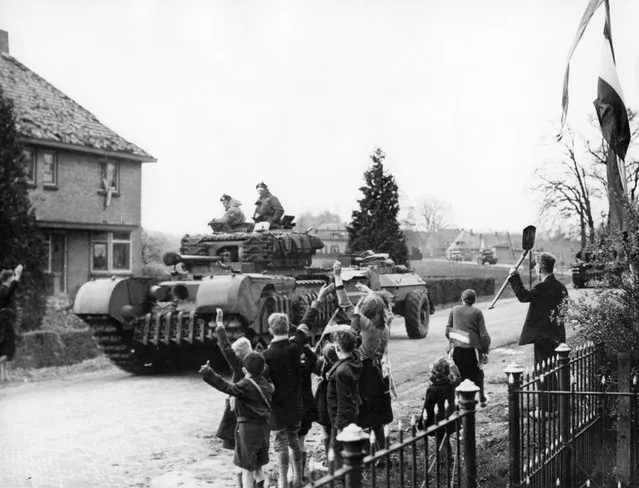
Picture released on April 12, 1945 of Dutch civilians waving to the Canadian soldiers driving through a village of Netherlands, during the Second World War. (Photo by AFP Photo)
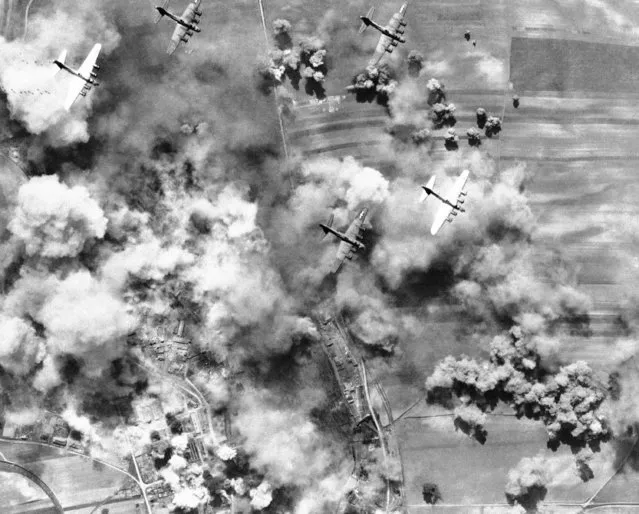
A formation of B-17 Flying Fortresses of the U.S. 15th Air Force flys on leaving a deadly hail of bombs of the important German Aircraft factory at Weiner Neustadt, south of Vienna Austria, May 3, 1944. Returning crews reported hits on the target, a large production center for Messerschmitt single-engined fighter planes. (Photo by AP Photo)
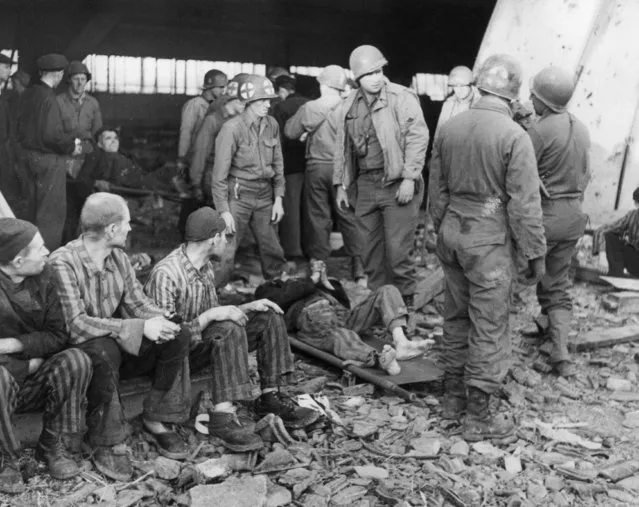
American medics preparing to evacuate slave labourers by ambulance from Nordhausen concentration camp, 16th April 1945. (Photo by Allan Jackson/Keystone/Getty Images)
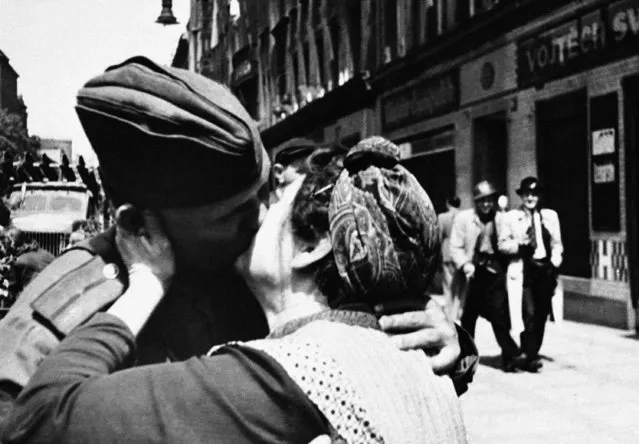
Czech patriots in Prague, the Nazi stronghold, rose in revolt in an endeavour to wrest the capital from the Germans. After driving the civilians from their houses, S.S. troops engaged in a mass slaughter. Along the highway from Benesov to Prague, anti-tank barricades were built, while German tanks ringed the city. Street fighting ensued, and many patriots were killed. Patriot snipers were posted behind barricades, in cellars, and in attics, pending the arrival of Russian troops. Overwhelmed with emotion, this Czech mother kisses one of the Russian soldiers in Prague, Czech Republic on May 5, 1945, who fought to free her beloved home. (Photo by AP Photo)

German prisoners of war at a fomer Nazi Military Academy in the 7th Army area, 17th April 1945. (Photo by Horace Abrahams/Keystone/Getty Images)
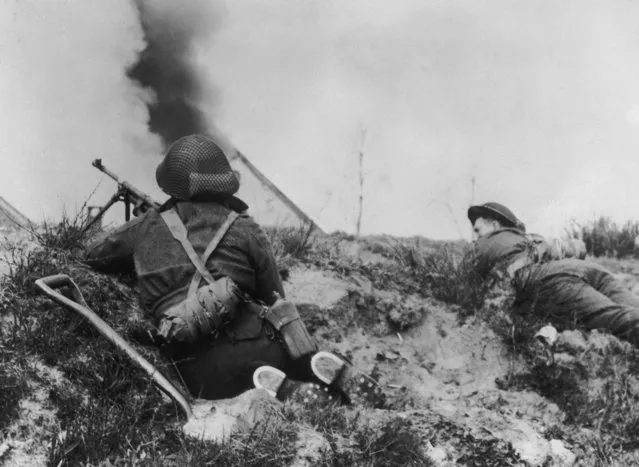
Soldiers from a Canadian regiment take up firing positions behind a canal bank in Holland, 17th April 1945. (Photo by Keystone/Hulton Archive/Getty Images)
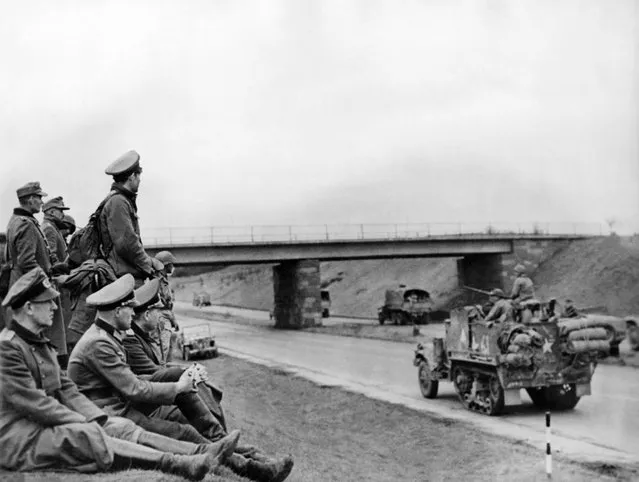
Picture released on April 18, 1945 of German officers sitting on the side of the road watching tanks of the Allies using the autostrades, motorways built by Hitler for his troops. (Photo by AFP Photo)
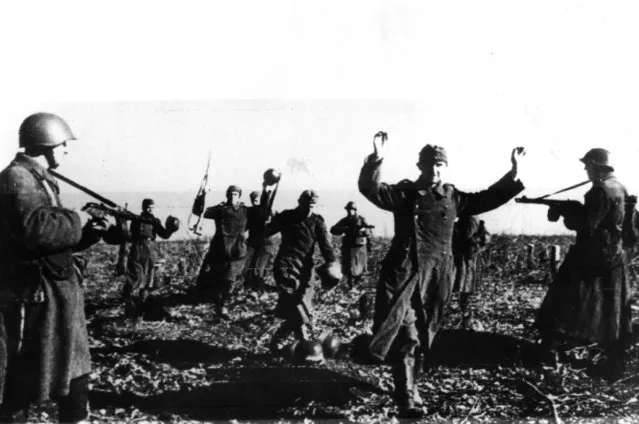
German troops throw down their steel helmets as they surrender on the Kharkov Front, 4th May 1942. (Photo by Hulton Archive/Getty Images)
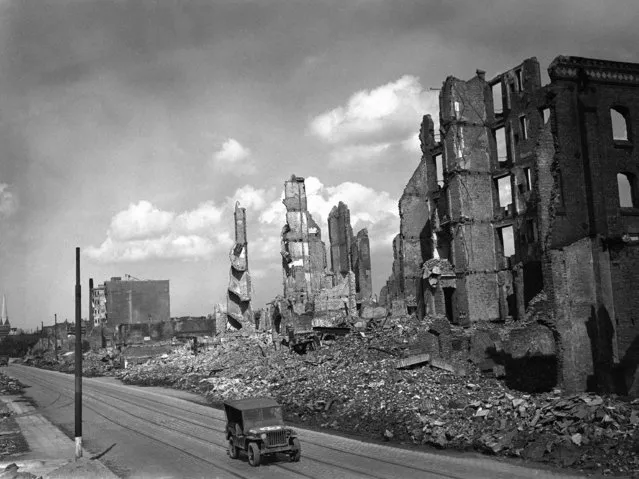
Scene showing some of the devastation to building in the in the Hamburg docks area, Germany on May 4, 1945. (Photo by AP Photo)
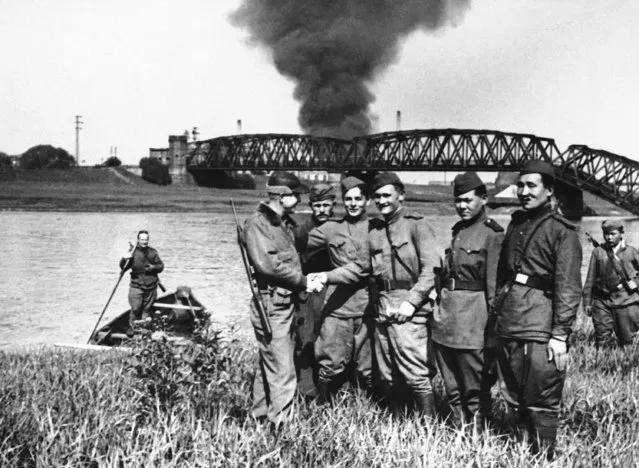
A group of Russian soldiers who met the Americans on the other side of the Elbe, Germany, on April 27, 1945. A burning building can be seen in the background. (Photo by AP Photo)
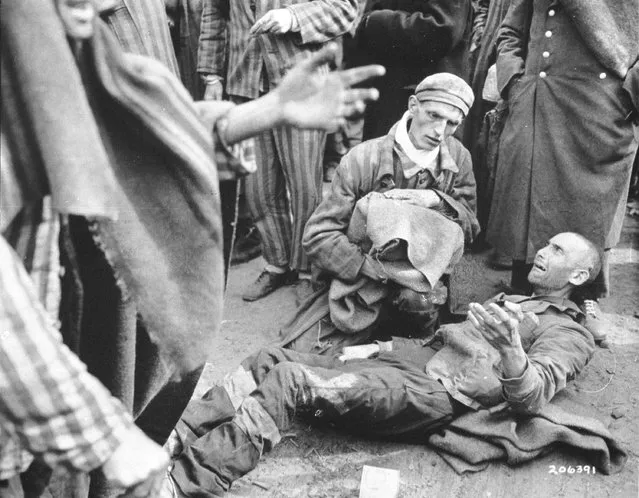
An inmate breaks out in tears as he finds out he is not leaving with the first group to the hospital May 4, 1945 after the U.S. liberation troops entered the concentration camp at Wobbelin in Germany. Many inmates were found in pitiful condition. (Courtesy of the National Archives/Newsmakers)
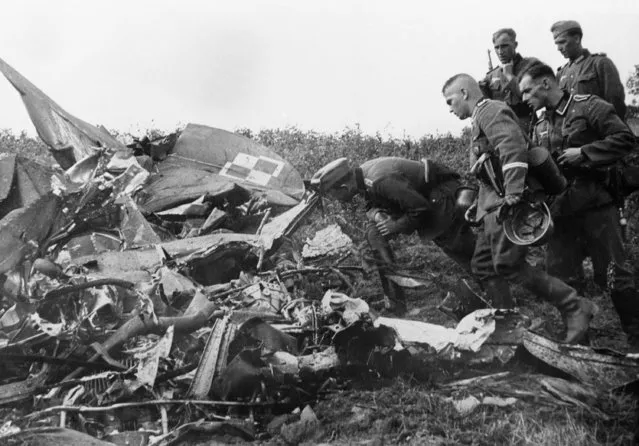
German soldiers inspect the wreckage of a Polish army plane shot down by a German pilot during an air raid, September 8, 1939. (Photo by AP Photo)
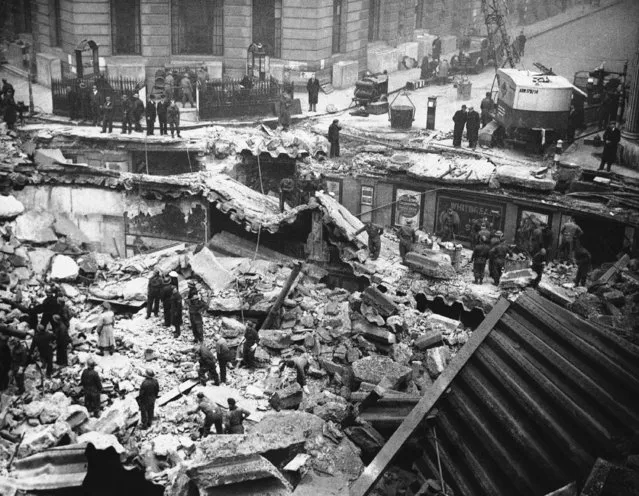
Helmeted workmen crawl through the ruins of wrecked London flats on September 9, 1940. Their first chore after a German bombing raid is to search for the dead. Their second is to salvage valuables. A demolition squad follows them to tear down unsafe buildings. For 11 days Londoners have cowered under attacks that have reduced many homes to rubble. (Photo by AP Photo)
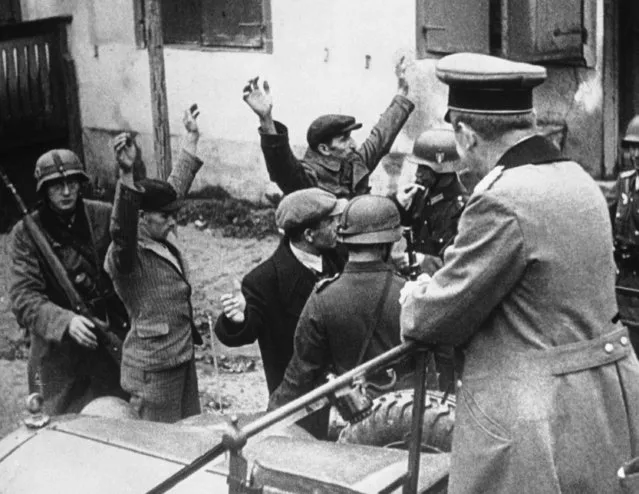
When German troops swept into this Polish seaport, civilians were searched for arms, as seen September 28, 1939 in Gdynia. (Photo by AP Photo)
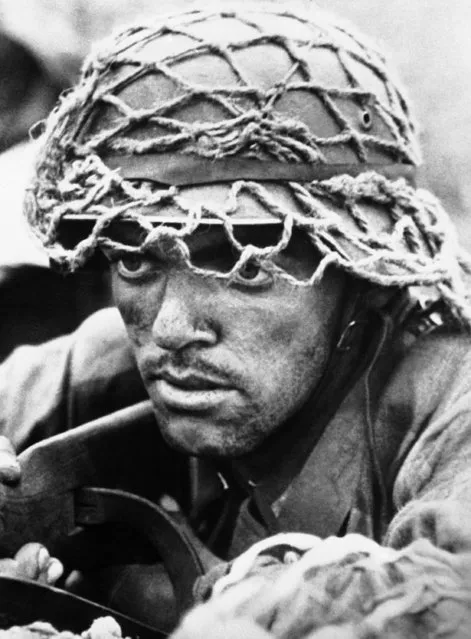
A German soldier, fighting somewhere on the Russian front on September 29, 1943. (Photo by AP Photo)
09 May 2018 00:01:00,
post received
0 comments
